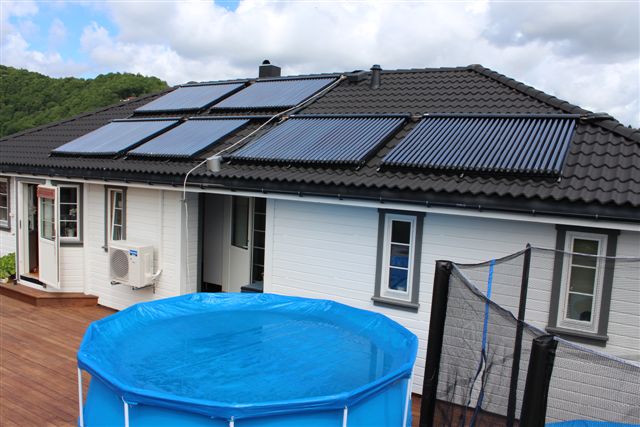Views: 11 Author: Site Editor Publish Time: 2024-02-23 Origin: Site

Hotels, apartments, fitness centers, spas, factories, schools, hospitals and other public places need to use a lot of hot water every day and energy expenditures account for a large part of the cost.
One-time investment in solar heating can recover investment costs in 2 to 4 years. Solar heating system can be used for 15-20 years, so it is obviously to see the fixed income in the future. From small home swimming pools to swimming pools for large stadiums, all can be heated by solar energy.
How They Work
Most solar pool heating systems include the following:
A solar collector – a device creates heat energy to heat working fluid going through pipelines.
Pumps -- circulates water through the pipeline and solar collector and back to the pool
A Heat Exchanger – where pool water and working fluid of solar collector circulation exchange heat energy.
A Controller-- a device to control whole system working automatically.
There are two independent circulations, solar collector circulation and pool heating circulation. The solar collector absorbs sunshine to get heat energy for working fluid through manifold and pipelines. At the same time, pool water and working fluid in pipeline are pumped through the filter and then through heat exchangers, where it is heated before it is returned to the pool.
Selecting a Solar Collector
A domestic solar pool heating system usually costs between $3,000 and $4,000 to buy. This provides a payback of 2 years, depending on your local fuel costs. However, the cost varies according to the heat needs of each family. They also typically last longer than gas and heat pump pool heaters. Your actual cost and payback depend on many factors. Therefore, before you purchase and install a solar pool heating system, you should do the following:
Evaluate sun insolation data at site.
Determine the correct system size
Determine the correct orientation and tilt for the collector
Determine the system's efficiency
Compare system costs
Investigate local codes, covenants, and regulations
Evaluating sun insolation data locally
Before you buy and install a solar pool heating system, you first need to consider solar resource in your local area. The efficiency and design of a solar pool heater depends on how much of the sun's energy reaches your building site. Basically, if your building site has unshaded areas and generally faces south, it's a good candidate for a solar pool heating system.
Sizing a Solar Pool Heater
Sizing a solar swimming pool heating system involves many factors:
Pool size
Length of swimming season
Average regional temperatures
Desired pool temperature
Sun insolation locally
Collector orientation and tilt
Collector efficiency
Use of a pool cover
Basically, the surface area of your solar collector should equal about 40%-50% of the surface area of your pool. In cooler and cloudier areas, you may need to increase the ratio between the collector area and the pool surface area. Adding collector quantity also lengthens the swimming season.
In any climate, you can usually decrease the required collector area by using a pool cover.
You'll also want a properly sized pool pump for a solar system. If you're replacing a conventional pool heating system with a solar system, you may need a pump larger than your current one or a separate, smaller pump to move the pool's water to solar collector side.
You can significantly reduce swimming pool heating costs by installing a solar pool heater. They're cost competitive with both gas and heat pump pool heaters, and they have very low annual operating costs. Actually, solar pool heating is the most cost-effective use of solar energy in many climates. Solar systems have become so easy to install that many pool owners can do it themselves.